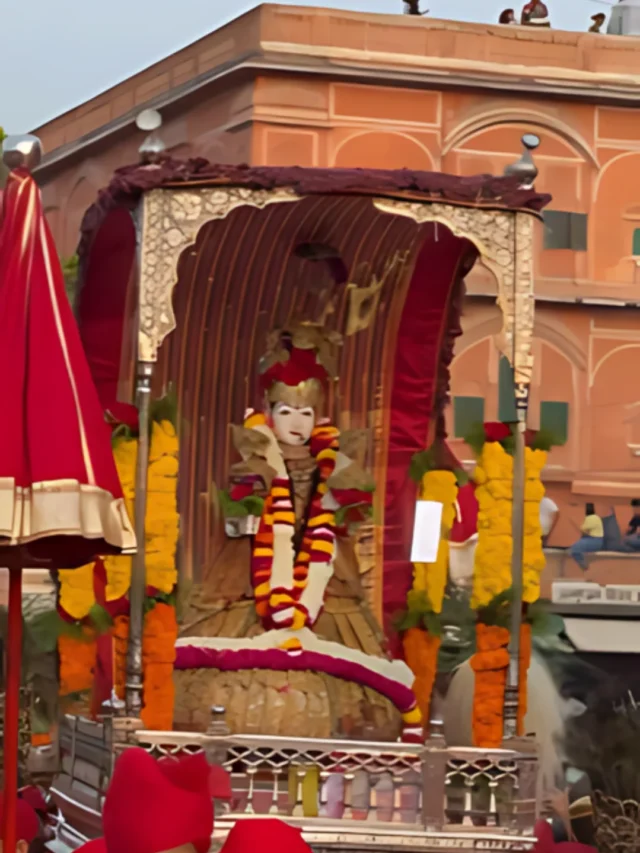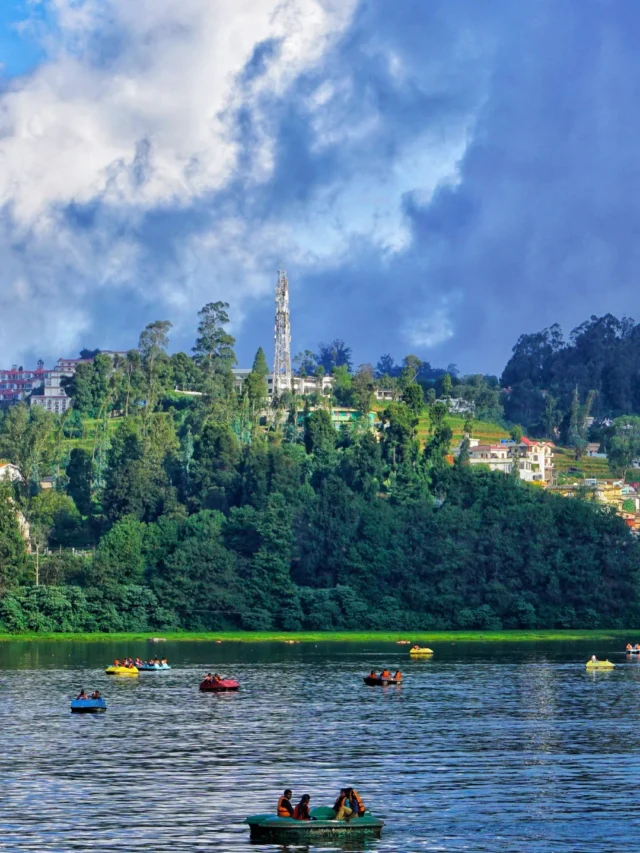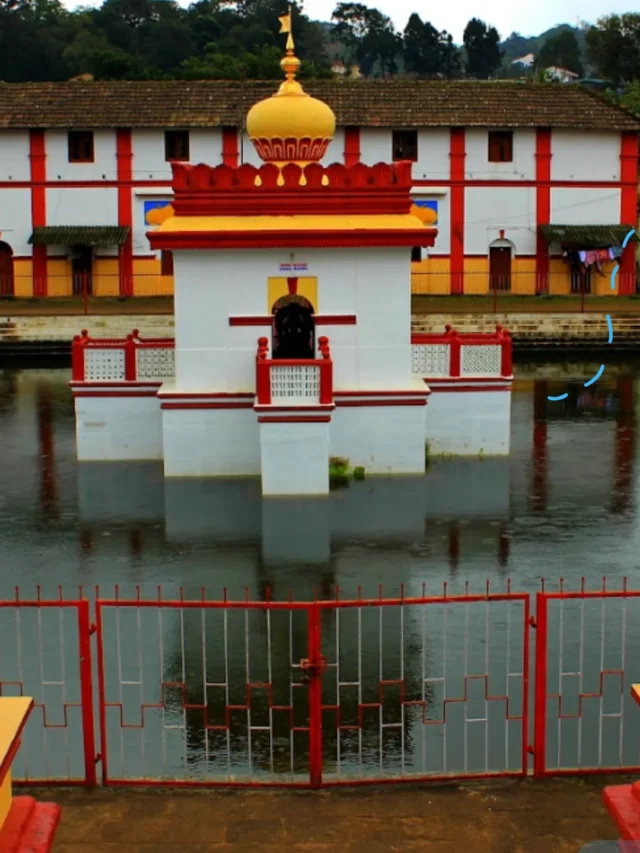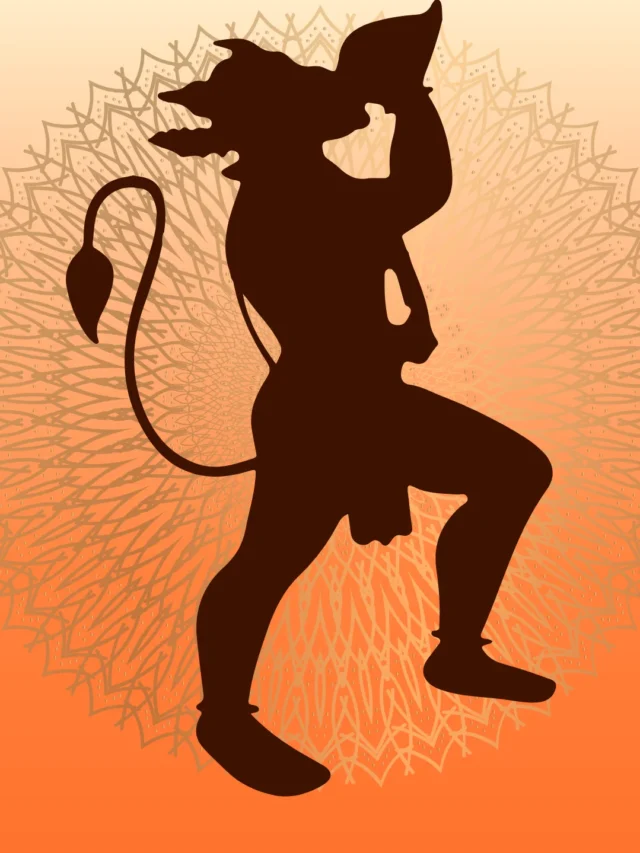Do you wish to start your 2024 with a strenuous trek? The Chadar Trek is at your rescue! This beautiful trek is long and tiring over a frozen Zanskar River and will give you the perfect New Year celebration you’ve been looking for!
Chadar Trek: Traverse the Frozen River
Adventure seekers may trek along the frozen Zanskar River in the Ladakh area of northern India on the amazing Chadar Trek, also called the Zanskar Frozen River Trek. This strenuous walk is a singular and dreamlike experience that draws nature lovers and adventure seekers.
The term “Chadar,” which means blanket or sheet in Hindi, refers to the thick covering of ice that accumulates over the Zanskar River during the winter and gives the journey its name. Subzero temperatures cause the river to freeze, resulting in a breathtakingly frozen scene encircled by tall snow-capped mountains.
The walk often starts in the town of Chilling and covers a distance of around 105 km, travelling through secluded and breathtaking scenery. Trekkers cross the icy river, moving over its ice-covered surface while the spectacular Zanskar Gorge canyon cliffs rise on both sides. Trekkers will pass through charming historic towns that appear to have stood the test of time, gorgeous snow-covered valleys, and tiny canyons along the way.
The Chadar Trek presents several difficulties, including erratic weather and extremely cold temperatures, sometimes falling as low as -30 degrees Celsius. Trekkers must be well-equipped with the right equipment to endure the challenging circumstances. The possibility of ice slipping on the river gives the trekkers an extra sense of adventure and makes them careful every step.
Through interactions with the native Zanskari people, the walk offers cultural experiences in addition to being a test of physical stamina. A taste of the traditional Ladakhi way of life may be had in the villages along the route, and staying in local houses enhances the whole cultural immersion experience for trekkers.
For those looking for a distinctive and difficult trekking experience in the heart of the Himalayas, the Chadar Trek is a must-do because of the breathtaking grandeur of the icy scenery and the exhilaration of walking on a frozen river.
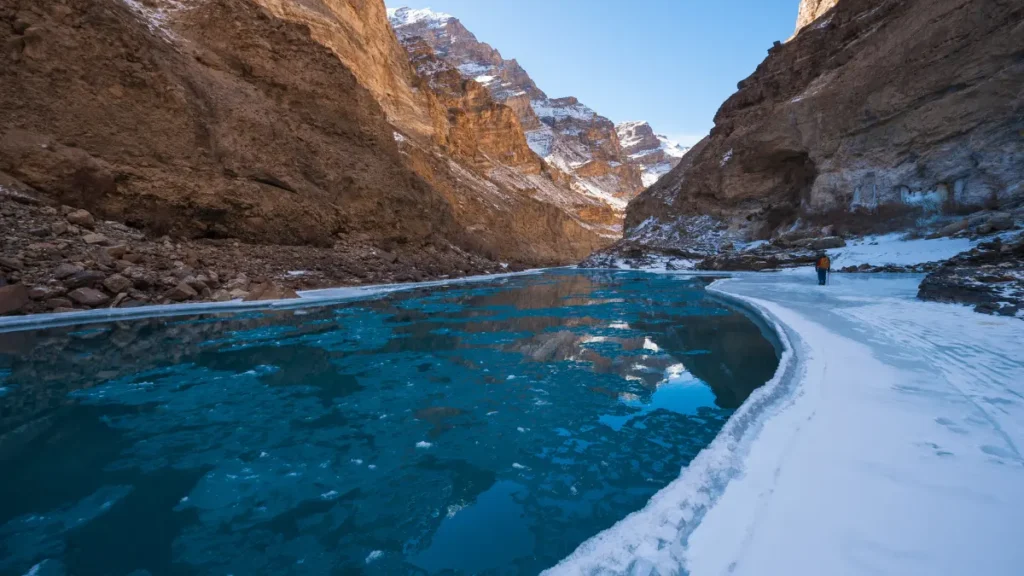
The History and Significance of the Chadar Trek
With its roots in the geological and cultural milieu of the Ladakh area, the Chadar Trek holds great historical and local significance.
The Zanskari tribe historically relied on the Chadar Trek as a crucial winter trading route to get between communities when deep snowfall blocked other routes. The icy Zanskar River served as a naturally occurring ice road that the people in the area could use to move supplies and keep the links between their remote communities intact. Even though the need for the ice blanket has decreased due to contemporary infrastructure and roads, the journey has similarities to the historic trade routes that kept towns afloat in this difficult landscape.
The Zanskari people’s culture is intricately interwoven with the Chadar Trek. Trekkers can contact the natives as they travel through several isolated communities along the Zanskar River. These exchanges provide a window into the Zanskari people’s traditional way of life, traditions, and hospitality. Many trekkers get to spend time in local houses, where they may experience the warmth of Zanskari hospitality and learn directly about the difficulties of surviving in such a hostile environment.
In addition, the journey has spiritual significance for Ladakh’s primarily Buddhist populace. There are several monasteries in the area, and the Chadar Trek frequently goes past a few of these places of worship. Trekkers come across prayer flags, stupas, and other symbols of faith along the way, turning the journey into a kind of pilgrimage. The walk has a tremendous effect on those looking for a more profound relationship with both culture and nature because of the serenity of the frozen terrain and the spiritual atmosphere of the monasteries.
The Chadar Trek is a trip through history, culture, and the unwavering spirit of the people who have lived for ages in the icy landscapes of Zanskar. It is more than simply a physical experience.
The Chadar Trek Itinerary
The Chadar Trek takes 6-9 days to complete and is 105 kilometres long. Let’s take a look at the itinerary!
Day 1: Arrive at Leh and Do an Overnight Stay
· During the winter, air travel is the sole means of accessing Leh. In Leh, the temperature is consistently below zero. To prepare for the abrupt drop in temperature upon landing, have a jacket, a woollen hat, and gloves on hand during the journey.
· There is a layer of snow covering Leh. Everywhere is white. At times, a thin layer of ice covers the roadways.
· Throughout the winter, Leh is only partially open. Only the stores that serve the community’s needs are open. Purchase all you need from your city; don’t save any big purchases until Leh.
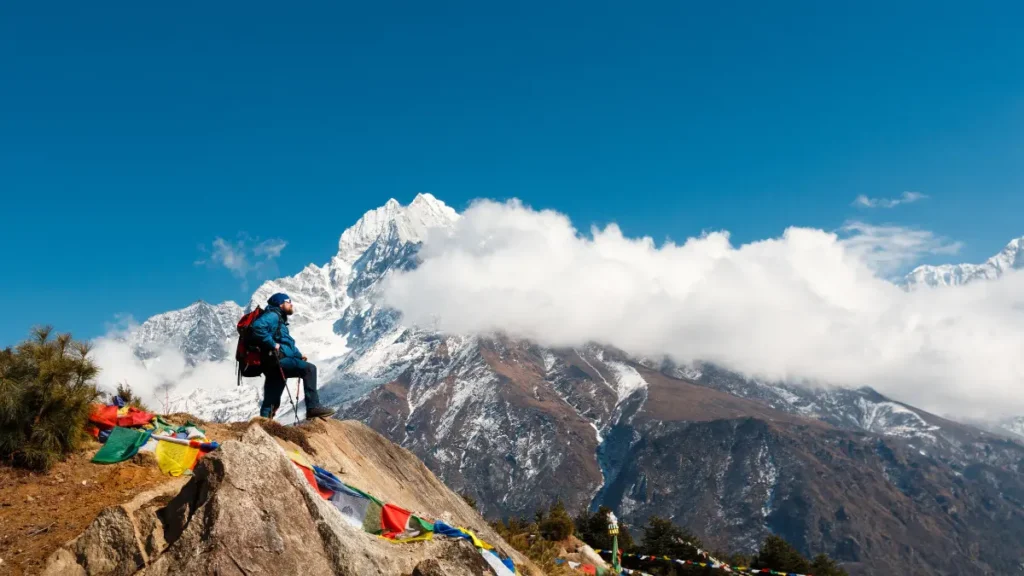
Day 2: Leh to Chilling – 3 to 5 hours – 64 Kilometres
· The drive to Chilling takes about 3 hours. From there, start trekking towards Tilat Sumdo, which is a kilometre long and takes two hours.
· Chilling, it’s 64 km from Leh to the beginning of your stroll on the icy Zanskar river. Travel the Leh-Srinagar route to Nimu, where the Indus and Zanskar rivers converge. At Nimu, turn left onto the Zanskar and follow the route. The road climbs beside the Zanksar. You can already see the ice sheets developing on the river.
· Continue up the Zanskar for an hour and a half to reach Chilling. The mostly abandoned hamlet of Chilling is scattered with a few army sheds and closed buildings. It continues for a few kilometres past Chilling. Proceed until the end of the road is seen. This point is where the road ends, and the trek begins.
· Start on the ice sheets cautiously, feeling your way around to gain a sense of the surface. A fresh layer of powder snow, a strong and glossy sheet, a newly created ice sheet, a weak and cracking ice sheet, or another unique texture can all be found on a ‘chadar’ surface. A new layer of snow makes walking simple. You can walk normally since the snow provides you with a solid grip.
· First, it’s challenging since the ice has an old, bright, hard surface. On a surface like this, walk like a penguin without lifting your feet off the ground too much. An hour into your walk is the Tilat Sumdo campground. Confluence is what Sumdo signifies. On your left, a little tributary joins the Zanskar. A field that is higher than normal is a nice place to camp. There are a few caverns on the other side where those without tents can set up camp. When travelling through the frozen river, the inhabitants typically spend their time in caves. It will be your first time camping in the bitter cold in Tilat Sumdo.
Day 3: Tilat Sumdo to Shingra Koma – 6 hours – 10 Kilometres
· Around seven in the morning, rise to the sun and be ready to leave the campground by nine. Even if the sun is up, Tilat Sumdo, like most ice sheets, only receives direct sunlight at midday, contributing to their formation and persistence.
· It could seem like a trek inside a deep freezer during the early walk on the sheets. The only exposed flesh on your face should be enough to give you a severe frost. Please pay attention to the noises the ice sheet produces as you go along it. The noises vary according to the thickness of the Chadar. Before long, you can tell where the Chadar is dangerously thin and where it is thick.
· There may be places where the river’s true corners are the only places where the sheet has developed, and a little overhang covers these corners. Don’t be afraid to crawl through such areas on all fours or your stomach. Tilat Sumdo is around 10 kilometres distant from Shingra Koma. You can finish the 10 kilometres in around 6–7 hours. Around midday on the trip, locate a sunny spot where your cook may quickly prepare Maggie’s supper and serve tea. On the Chadar trek, packed lunches are not recommended since the food will get too cold by midday. The only way out is to get hot, fast meals on the way.
· You should not be shocked to see pug markings when riding on ice. Big cats are elusive to human sight, although they travel about rather freely. As you continue upstream, you’ll pass Shingra Koma, a large camping area on your right. It’s directly beneath a massive stone wall resembling something from a Hollywood production. On one side of the Zanskar River, towering peaks rise while the river makes a stunning curve just in front of the campground. The name Shingra Koma comes from the abundance of the Shingra plant.
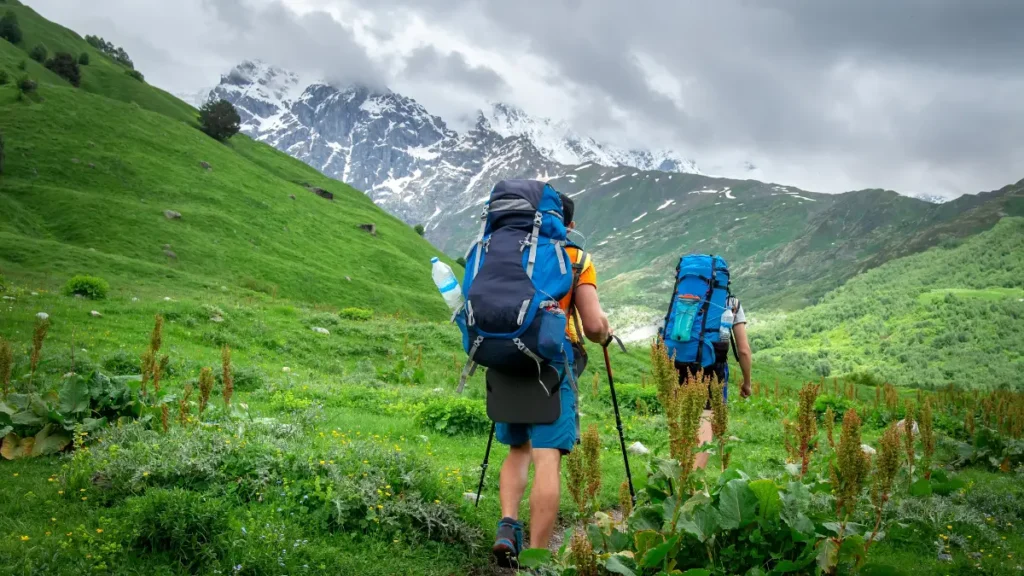
Day 4: Shringa Koma to Tibb – 8 hours – 15 kilometres
· The walk from Shingra Koma to Tibb is quite scenic and long. While on this magical trip, don’t forget to take in the breathtaking icefalls that have replaced the frozen waterfalls on the left. These icefalls are a quiet tribute to the frozen craftsmanship of nature.
· After walking for a few hours, you reach a large waterfall on the left. Prayer flags flutter in front of the waterfall on the trees. You are aware of the Ladakhis’ deep reverence for the location. The waterfall is surprisingly not frozen. Take note of the verdant moss that is flourishing on the underwater rocks.
· According to legends, when Nerak ran out of water for a year, a holy man travelled to Kailash and prayed for more. He returned carrying two fish and a pot full of water. He had to make sure the pot was kept out of sight. He happened to set the pot here, and two fish leapt off, generating this enormous cascade, on the way back. It appears like the rocks behind have two noses. One is dripping with water, while the other is dry. Legend has it that the source of this waterfall lies in Tibet’s Kailash.
· The halfway point, behind a rock overhang, is the designated lunch spot for the day. After lunch, the Zanskar River flows through slender canyons that are only wide enough for four persons to clasp hands to cross. The river is nonexistent because the little canyon receives very little sunshine. Here, a thick chadar usually develops from end to end.
· After two more hours of walking through the many shades and shapes of Chadar, you will arrive at Tibb, a sizable camping place on your right. Caverns to the left can easily house eight or nine people. There is also more arid vegetation surrounding the Tibb campground.
Day 5: Tibb to Nerak – 7 hours – 12 kilometres
· It is a 12-kilometer hike from Tibb to Nerak. You will finally come to the much-anticipated ice waterfall on this day. The day is lovely as you go through Chadar’s valleys, gorges, and cliffs. You first see Nerak during your lunch break five hours into the trip. Prayer flags encircling juniper bushes at the Chadar indicate you are approaching Nerak, and the waterfall is just ahead.
· After a kilometre, the well-known Nerak waterfall may be found around a curve in the gorge’s shadow. Ahead of the waterfall is the Nerak pul, or bridge. Even though it’s an ancient wooden bridge, four to five people can wait at a time on it. Walking across the precarious bridge and enjoying the view of the waterfall from the top is a pleasant experience.
· It’s only a twenty-minute walk to the charming Nerak if you follow the route alongside the gorgeous Chadar. Climb a short trail to reveal the charming Nerak campground.
· The settlement of Nerak is situated 2,000 feet above the riverbed. The Chadar hikers set their tent 200 feet above the river, not in the settlement. During the summer, the lone shelter at Nerak Campsite doubles as a Rafting point. It provides refuge for the Chadar hikers throughout the winter.
· Nerak is well known for its very chilly evenings and gusts. A temperature plunge of -25 degrees Celsius is possible. Nerak is going to be the trek’s coldest point.
Day 6 to 9: The Return Journey of the Chadar Trek
· Although the return path is essentially a retrace of the three days’ worth of travel, it may seem very different in practice. The Chadar’s dynamics can alter the overall appearance and atmosphere of the space.
· The texture of the Chadar varies. Old Chadar breaks, new ones form where none previously existed, and so on. The Chadar occasionally breaks beneath your feet and disappears like a raft. All you can do is sprint forward onto the safer sheet. You see more icicles clinging to it to build a new Chadar somewhere else, and you witness the same shattered raft becoming trapped somewhere downstream. Trekking in Chadar is an adventure.
Best Time to Do the Chadar Trek
The perfect time to do the Chadar Trek is in the winter, from January to February when the river is most likely frozen.

How to Physically and Mentally Prepare Yourself for the Chadar Trek
Aim for physical and mental toughness to prepare your body and mind for the demanding Chadar Trek.
Physical Preparation:
· Increase your cardiovascular endurance by jogging, cycling, or HIIT, and strengthen your lower body and core with specific workouts.
· Increase your endurance gradually by going on long walks and treks.
· Wear appropriate clothing and train in comparable circumstances to help you get used to the hard, cold weather.
Mental Preparation:
· Develop awareness to help you stay focused and in the moment while hiking, and utilise yoga and mindfulness to help you cope with stress.
· Imagine finishing the walk successfully and cultivating the flexibility to deal with unforeseen difficulties.
· If you are travelling with a group, participate in team-building exercises to improve your communication skills.
Always seek the assistance of experts for specific guidance and ensure you are well-prepared for fulfilling the Chadar Trek.
Conclusion
The Chadar Trek is one of the most fulfilling winter treks in India. This 8-9-day long trek will provide you with the thrill you’re seeking. Walking on the frozen river will bring home memories of a lifetime. Remember that it is a difficult trek, and you will need sheer mental and physical prep to complete it. If you have the passion and enthusiasm to do this trek, January and February 2024 are the perfect time to walk on ice and feel at home with nature’s best destination – Ladakh.


